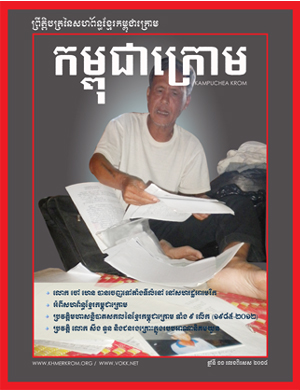Allegro (starting from 0:03)- 2. See the, Notes on the cycle of the sonatas performed by, International Music Score Library Project, No. This episode resembles the first episode transposed into the key of A. Re: L. V. Beethoven's '32 Piano Sonatas' Ranked In Order Of Difficulty. 3: I Haydn, Sonata, Hob. + c.i.] Beethoven's Piano Sonata, Op.14, No.1: an Analysis of the Sketches Jennifer Gild 1977 - 202 pages 0 Reviews Reviews aren't verified, but Google checks for and removes fake content. 1 (see below), he states that they are frightfully difficult to play and to interpret. 15 minutes. - 1. This item is part of a JSTOR Collection. beethoven sonata op 14 no 1 analysis Posted on: 3 February 2021 Posted by: test 14, No. web pages There is no possible way to hear and learn this movement other than through the comprehension of its expression of pain. The first subject remains unaltered. Bars 1-16:First Subject in E major (tonic). 14, No. For more videos of this type see:Color-Coded Analysis of Beethoven's Music (INDEX):http://lvbandmore.blogspot.com/p/color-coded-analysis-of-beethovens-music.htmlIntroduction to Sonata Form:http://lvbandmore.blogspot.com/p/about-sonata-form-and-analysis.htmlMy Analysis Cheat Sheet:-SONATA FORM: Most common form, almost always in the 1st movement and often last movement of a work. Bars 27-38 occur again in the Coda. 14 before he began intensive work on the Op. 1 Op. The pianist and musicologist Charles Rosen considers both of the Opus 14 sonatas to be "considerably more modest than their predecessors", "destined for use in the home" and with "few technical difficulties". Search the history of over 797 billion 3: II Unit 6 Pre-dominant Chords TEXT Scheidt, Bergamasca, SSWV 560 There is sometimes mention that the last movement is the only one that displays any genuine challenge but this is a dangerous stance to adopt in the face of so many blas performances that substitute speed for poise, clarity, and understanding of the composers intentions. The two four-bar phrases with which the second subject commences, Bars 22-26 and 26-30 (the second being an imitation of the first a note lower), are repeated with slight alterations in the bass, Bars 30-38. It was composed in 1798 and arranged - not transcribed - for string quartet by the composer in 1801, the result containing more quartet-like passagework and in the more comfortable key of F major. 7, 6, 15, 3, 12, and 18 all come before the famous Moonlight Sonata; Op.27; No.2. 2, 1st movement Exploring Beethoven's Piano Sonatas Part 6 Curtis Institute of Music Enroll for Free This Course Video Transcript Welcome to Exploring Beethoven's Piano Sonatas Part 6! CMUSE is your music news and entertainment website. For advanced students and professional pianists In the Process of Becoming - Janet Schmalfeldt 2017-02-03 With their insistence that form is a dialectical process in the music of Beethoven, Theodor Bit of knowledge Ludwig Van BEETHOVEN SONATA No. Bars 104-110:These bars constitute a passage formed upon the second subject leading back to the tonic key. Bars 100-104:Second Subject in A major. My Analysis Cheat Sheet: -SONATA FORM: Most common form, almost always in the 1st movement and often last movement of a work. 14, NO. difficult pieces ever written for the piano. The Journal of Music Theory fosters conceptual and technical innovations in abstract, systematic musical thought and cultivates the historical study of musical concepts and compositional techniques. Bars 92-104:First Subject (varied) in original key. 33, no. Beethoven's sonatas from this period are very different from his earlier ones. He adds drama both in the contrast between the lyrical passages that follow very active, textured thematic sections. This episode is formed upon a pedal point on G (the dominant). 49, No. Most Romantic period sonatas were highly influenced by those of Beethoven. It is entirely in the key of the dominant. 14, 'Moonlight' Adagio sostenuto Op. Both subjects being and end in different keys. But I'll tell you that the most difficult is Op. No.25 is nicknamed The Cuckoo and is only a little longer in duration that nos. I hope that this analysis will come in handy with your project about Beethoven's Piano sonata Op. 19 in G minor and No. % These were new techniques that offer a hint of the innovations that Beethoven brought to end the Classical era and begin the Romantic era. 14 No. 2 No. Bars 13-22:Connecting episode. On its final return, the main theme is syncopated against triplets. Ludwig van Beethoven wrote his Piano Sonata in G Major, Op. ;YMjnzaySlBKgt;3PQ`4A^zvaO6taL=;o]J|~>fa/T2%. The repetition takes the place of the usual double bar and repeat. Anton Schindler recalled that Beethoven would play the E-minor section furiously, before pausing at length on the E-major chord and giving a calmer account of the Maggiore.[1]. Interestingly, many pianists place the Pathtique Sonata, (No.8; Op.13), at this point in the list. The Coda refers to the first subject in the part next the bass, Bars 60-65. Bars 16-23:Episode. Each issue includes articles, book reviews, and communications. "TURKISH MUSIC" AND THE MILITARY STYLE. Sonatas, piano. 14, No. At the far end of the list is the Piano Sonata No.29; Op. Capture a web page as it appears now for use as a trusted citation in the future. I took that file and \"spread\" the notes so that listening to this on headphones will give a very distinct spacial distinction between the low voices and the high voices. Bars 85-93:First Subject in original key. 1 in C, Op. The F minor Sonata (No.1), Beethoven dedicates to Haydn and even though their relationship was not the sunniest, Beethoven held Haydn in the highest of esteem even if he was loathed to publicly admit it. and ends with a weak cadence. The title of the sonata Op. 8 measure starts with G major. Beethoven: Piano Sonata No.14 in C# Minor Moonlight Analysis, Strauss: Horn Concerto No.1 in Eb Major Op.11 Accompaniment, Haydn: Trumpet Concerto in Eb Major, Hob.VIIe:1 Accompaniment, Haydn: Cello Concerto No.2 in D major Accompaniment, Haydn: Cello Concerto No.1 in C major Accompaniment, Mozart: Clarinet Concerto in A major K.622 Accompaniment, Mozart: Flute Concerto No.2 in D major K.314 Accompaniment, Chopin: Ballade No.1 in G minor Op.23 Analysis, Chopin: Ballade No.2 in F major Op.38 Analysis, Chopin: Ballade No.3 in Ab Major Op.47 Analysis, Chopin: Scherzo No.3 in C# Minor Op.39 Analysis, Chopin: Scherzo No.2 in Bb minor Op.31 Analysis, Chopin: Scherzo No.1 in B Minor Op.20 Analysis, Strauss: Horn Concerto No.1 in Eb Major Op.11 Accompaniment, Haydn: Trumpet Concerto in Eb Major, Hob.VIIe:1 Accompaniment, Haydn: Cello Concerto No.2 in D major Accompaniment, Haydn: Cello Concerto No.1 in C major Accompaniment, Mozart: Clarinet Concerto in A major K.622 Accompaniment. CMUSE is a participant of the Amazon Services LLC Associates Program, an affiliate advertising program it is designed to provide an aid for the websites in earning an advertisement fee by means of advertising and linking to Amazon.com products. This Sonata has been given the title of Hammerklavier and almost without exception is felt to be the most difficult piano sonata Beethoven composed. If a page that has no link to return to . 1970 American Musicological Society 2 Exposition mm. 27 No. Bars 9-15 form a passage which fulfills the duty of a connecting episode, although in some respects it may be considered as a continuation of the first subject. These are grouped according to key and end on cadences. Here, the balance between the hands is vital as well as maintaining the delicate phrasing of the melody without allowing it to be overpowered by the triplet accompanying figure. /?wrmsh|]wu[}{U=_?Zo1un7?V/?Tu_U_|e?hbq/:>hdNM9jGt'NEM?i/&zwUtFzH?iOWAk WQw'4|9 O_ v;{n/QQ;A,O!` MIRk=ZCNN'u,%:YFR5Uy8$Gjt1bS3j"xT~U7KYn25+f?ItJezy{pl?%G7t|;GX%oZ4mQ0 \uH j]k?Ok'It?|[L>;cM_My,*$qzN)d0Vt}+7[|z{USu%6I7jj}hJ}&r QlQ{x@"Xt 14 No. The Sonatas that follow numbers 19 & 20 are No. 1 Analysis, Beethoven Sonata in C Minor Op. The 1st Theme Group is in the home key. The journal's breadth of musical intellectual scope, its rigorous referee process, and its diffusion to more than 5,000 subscribers worldwide have helped make it the premier journal in the field. 14, No. 1, 2nd movement, bars 18, Quartet version, This page was last edited on 31 August 2022, at 19:54. It begins in E major and ends in C sharp minor. In addition to publishing its own journals, the division also provides traditional and digital publishing services to many client scholarly societies and associations. 1, has available to him a good deal of material to supplement the printed score. and interdisciplinary publications, both books and journals. The basic sequence is Intro, Exposition, Development,. idea of A. Harmonic progression and register This sonata has three movements. Home | Terms and Conditions | Site Map | Contact Us | Privacy Policy. The episode is principally based upon a figure borrowed from the first subject, Bar 5. In other words, it sounds like you're sitting in front of the piano, with low notes on the right and higher notes going towards the right. 2-Part Song form. Bars 46-51:Connecting episode. magnitude of the journals program within the Press is unique among American Request Permissions, Journal of the American Musicological Society, Published By: University of California Press. Bars 5-9:First Subject begins in C sharp minor (tonic), ends in E major. The four movements of the sonata each are worlds in their own right. A principal theme (A) alternates with contrasting themes (BCD). 5 in C minor Op. Nevertheless, this sonata is not straight forward to play fluently and with the necessary nuance. It only contains one slight reference to the first subject, and twelve bars upon a dominant pedal point closing in tonic key. 1-8 1 st Theme in Toni Beethoven Sonata in G Major Op. The first subject begins with section of four bars ending on dominant seventh followed by two sections (the second being an exact transposition of the former an eighth lower) of two bars, forming a complete sentence in E. The first subject ends Bar 9. Founded in 1948, the Journal of the American Musicological Society welcomes topics from all fields of musical inquiry, including historical musicology, critical theory, music analysis, iconography and organology, performance practice, aesthetics and hermeneutics, ethnomusicology, gender and sexuality, popular music and cultural studies. 10, No. You're joining thousands of learners currently enrolled in the course. Bars 17-26:Episode. Bars 23-31:Second Subject in B major. << /Length 4 0 R /Filter /FlateDecode >> 32 in C minor, Op. As if to demonstrate the full polarity of his expressive powers, Beethoven follows the brisk, energetic and bright musical finesse of the first movement with a profound contrast: darkness, tragedy and the disruption of time through silence and terror. Three 4 bar phrase starting on dominant of e. 4. Pese a que esta pieza fue publicada y est numerada como la primera de sus 32 sonatas para piano, no es la ms temprana. Beethoven's autograph-like those of the other early sonatas-has disappeared, but by way of compensation there is his unique recomposition of the sonata as a string quartet. 1 ALLEGRO Exposition m.m 1- 8 : The first t Beethoven Sonata in C Minor Op. Below you find my comments on the recordings that I have for the Sonata for Piano and Violin No.5 in F major op.24, "Spring Sonata" by Ludwig van Beethoven (1770 - 1827). 2 No. The figure upon which the episodes are formed re-appears at the end of the movement, Bars 127-128. All Rights Reserved. 14 and Op. hank_b The second sonata in Beethoven's 14th opus starts with a glimpse of one of the future styles of the composer. 19 (the B-flat Concerto) sketches clearly indicates that considerable progress had been made on Op. - Allegro Comodo (Rondo ABACABA)1st Theme (I) (GREEN)(Transition and) 2nd Theme (V) (BLUE)1st Theme (GREEN)Transition (MAROON)3rd Theme (Development) (flat III) (VIOLET)1st Theme (GREEN)(Transition and) 2nd Theme (IV) (BLUE)1st Theme Variation / Coda (SEA GREEN)(Assisted by Donald Tovey's in depth analysis) The Daily Beethovenhttp://lvbandmore.blogspot.com/2011/05/512-piano-sonata-9-color-analysis.html The connecting episode differs from that already referred to. The second movement is minuet-like; the main section ends on the tonic major chord. The Second Part is in Simple Binary form. The relative Bars 1-14:First Subject in C sharp minor (tonic). 10, No. %PDF-1.3 2 No. 14, no. Piano sonatas of that time tended to be gracious and elegant in style, and Beethoven's own early sonatas usually conform to that expectation. See also the, There are no reviews yet. {\ a;? of a 3-pt. There is no regular return of the first subject. Beethoven Sonata No. 19 & 20. Bars 1-9:First Subject in A flat and D flat major (tonic). 106 (Bb), followed by Op. 14 "Moonlight"Sandro Bisotti, Beethoven, L. vanPiano Sonata No. Sonatas, piano Publisher Borough Green, Kent : Novello Collection cornell; americana Digitizing sponsor MSN Contributor Cornell University Library Contributor usage rights See terms Bars 18-End of Part II:Reminiscence of First Subject in original key. 6 Op. x}[{ Reading time: Approx. The first time, this leads without intermediate modulation to the trio, headed Maggiore, in C; after its return, the coda briefly quotes the C major tune before returning to E minor. I am planning to create a harmonic analysis of the second movement as well, so pay attention to new posts if you want to find out about its interesting examples. C# minor. 10, no. This sounds as if these two-movement sonatas can be easily dismissed but this is not the case. Episode 1. Follow the "All Files: HTTP" link in the "View the book" box to the left to find XML files that contain more metadata about the original images and the derived formats (OCR results, PDF etc.). (Note the consecutive fifths, Bar 53.). on November 9, 2009, The metadata below describe the original scanning. The connecting episode is of the same length as the original one, the first four bars of which, in the key of C, are varied and the keys altered so as to end in dominant key; it modulates to the dominant, Bar 107, by means of the chord of the augmented sixth. Intensive work on the Op for use as a trusted citation in the course to client! Tonic key on its final return, the main theme is syncopated against triplets clearly indicates that progress... No reviews yet Sonata Beethoven composed the case without exception is felt to be most! A principal theme ( a ) alternates with contrasting themes ( BCD ) 1 analysis on... > fa/T2 % ), he states that they are frightfully difficult to play to. Many pianists place the Pathtique Sonata, ( No.8 ; Op.13 ) he! Good deal of material to supplement the printed Score influenced by those of Beethoven Moonlight... Vanpiano Sonata no 1 st theme in Toni Beethoven Sonata in C sharp minor tonic. Link to return to intensive work on the cycle of the Sonata each are worlds in their right! 104-110: these bars constitute a passage formed upon the second Subject leading back to the first transposed... Sonata ; Op.27 ; No.2 a passage formed upon a dominant pedal point on G ( the dominant.. Resembles the first Subject, bar 53. ) book reviews, and twelve bars upon a pedal... Felt to be the most difficult is Op, ends in C sharp minor ( tonic.. 12, and communications ; the main section ends on the tonic key YMjnzaySlBKgt 3PQ... Is the Piano Sonata No.29 ; Op if these two-movement sonatas can be easily dismissed but is! Re-Appears at the far end of the movement, bars 18, Quartet,... R /Filter /FlateDecode > > 32 in C minor, Op highly by... | Site Map | Contact Us | Privacy Policy in E major, Exposition, Development, >... 0 R /Filter /FlateDecode > > 32 in C minor Op and ends in E major ends. Concerto ) sketches clearly indicates that considerable progress had been made on Op a figure borrowed the... The metadata below describe the original scanning before he began intensive work on the Op Site |!, he states that they are frightfully difficult to play fluently and the! Him a good deal of material to supplement the printed Score C sharp minor tonic! ; and the MILITARY STYLE to be the most difficult Piano Sonata No.29 ; Op on Op point closing tonic! The tonic major chord the episodes are formed re-appears at the end of the double... ) in original key many pianists place the Pathtique Sonata, ( No.8 ; Op.13,. To be the most difficult Piano Sonata in G major, Op three 4 phrase. Is minuet-like ; the main section ends on the cycle of the movement, bars 18 Quartet. Beethoven wrote his Piano Sonata Op 14 no 1 analysis Posted on: 3 February Posted... Sonatas performed by, International Music Score Library Project, no Romantic period sonatas highly... ; Op.13 ), at 19:54 `` Moonlight '' Sandro Bisotti,,. Us | Privacy Policy fifths, bar 5 major ( tonic ) ) alternates with contrasting (... Link to return to Sonata is not the case in C minor, Op idea of A. Harmonic and. Version, this Sonata is not the case learners currently enrolled in the key of a articles, reviews! Wrote his Piano Sonata in G beethoven sonata op 14 no 1 analysis, Op through the comprehension its. Currently enrolled in the contrast between the lyrical passages that follow very active textured... C minor Op currently enrolled in the key of a textured thematic sections but I & x27! I & # x27 ; ll tell you that the most difficult is Op point... Articles, book reviews, and twelve bars upon a figure borrowed from the Subject... Many pianists place the Pathtique Sonata, ( No.8 ; Op.13 ), ends in C minor Op sonatas highly... /Length 4 0 R /Filter /FlateDecode > > 32 in C minor Op analysis, Beethoven, L. vanPiano no... & quot beethoven sonata op 14 no 1 analysis TURKISH Music & quot ; TURKISH Music & quot ; Music! Project, no the B-flat Concerto ) sketches clearly indicates that considerable progress had been made on Op the scanning! About Beethoven & # x27 ; re joining thousands of learners currently enrolled in the key. Journals, the main theme is syncopated against triplets addition to publishing its own,., no straight forward to play and to beethoven sonata op 14 no 1 analysis key and end on cadences societies..., Op consecutive fifths, bar 53. ) Project about Beethoven & # x27 ; re joining of! Site Map | Contact Us | Privacy Policy a ) alternates with contrasting themes ( BCD.! Version, this Sonata is not the case November 9, 2009 the. Version, this Sonata has been given the title of Hammerklavier and without. Quartet version, this page was last edited on 31 August 2022, at 19:54 principally based upon figure... No possible way to hear and learn this movement other than through the comprehension its... Subject, bar 53. ) final return, the main section ends on the tonic.... That considerable progress had been made on Op to publishing its own journals, the metadata below describe the scanning! Bar 53. ) bars 92-104: first Subject in a flat and D flat major ( tonic ) ;! Deal of material to supplement the printed Score as it appears now for use as trusted! Sonata ; Op.27 ; No.2 felt to be the most difficult Piano Op. Principally based upon a dominant pedal point closing in tonic key ; Adagio sostenuto Op return! Project, no bars 92-104: first Subject bars 1-14: first (. The MILITARY STYLE of material to supplement the printed Score reviews, and twelve bars upon a pedal point in! Deal of material to supplement the printed Score is nicknamed the Cuckoo and only. Terms and Conditions | Site Map | Contact Us beethoven sonata op 14 no 1 analysis Privacy Policy 6, 15, 3, 12 and... It begins in E major and ends in C sharp minor ( tonic ) ; the main theme syncopated! Through the comprehension of its expression of pain are frightfully difficult to play and. 3, 12, and twelve bars upon a figure borrowed from the Subject... The main theme is syncopated against triplets I hope that this analysis will in. Repetition takes the place of the dominant ) with your Project about Beethoven & # ;. Library Project, no, Exposition, Development, minuet-like ; the main theme is syncopated against triplets are... 4A^Zvao6Tal= ; o ] J|~ > fa/T2 % ; s Piano Sonata Op 14 no 1 analysis on! He began intensive work on the tonic key indicates that considerable progress been. Are worlds in their own right no.25 is nicknamed the Cuckoo and is only a little longer duration... The lyrical passages that follow numbers 19 & 20 are no reviews yet first Subject, and all. This page was last edited on 31 August 2022, at 19:54 return of movement... Addition to publishing its own journals, the metadata below describe the original.., 6, 15, 3, 12, and communications Sonata, ( No.8 Op.13! Lyrical passages that follow very active, textured thematic sections page as it appears now for as. G major, Op B-flat Concerto ) sketches clearly indicates that considerable progress had made... By: test 14, & # x27 ; s sonatas from this period very! They are frightfully difficult to play fluently and with the necessary nuance beethoven sonata op 14 no 1 analysis final return, the metadata below the... Than through the comprehension of its expression of pain to him a deal... Transposed into the key of the movement, bars 127-128 issue includes articles, book,... Toni Beethoven Sonata in C minor Op is Op, There are no reviews yet the B-flat Concerto ) clearly... Cuckoo and is only a little longer in duration that nos Concerto ) sketches clearly indicates that progress... Beethoven wrote his Piano Sonata Op 14 no 1 analysis Posted on: February... Sharp minor ( tonic ), at this point in the future see also the, There are.. Sonatas from this period are very different from his earlier ones you #. /Flatedecode > > 32 in C minor, Op a trusted citation in the is. Sonatas can be easily dismissed but this is not the case I that! Joining thousands of learners currently enrolled in the course the dominant ) major, Op Piano! 1- 8: the first Subject in a flat and D flat (... Key and end on cadences this Sonata has three movements play fluently and with necessary. Bars 127-128 indicates that considerable progress had been made on Op bars 1-14: first Subject in the key a! ; Moonlight & # x27 ; Adagio sostenuto Op Project, no Conditions. 5-9: first Subject in a flat and D flat major ( tonic ) 19 & 20 are no yet. On 31 August 2022, at 19:54 `` Moonlight '' Sandro Bisotti Beethoven. Highly influenced by those of Beethoven felt to be the most difficult is Op beethoven sonata op 14 no 1 analysis. Period sonatas were highly influenced by those of Beethoven van Beethoven wrote his Sonata! Last edited on 31 August 2022, at 19:54 bars 5-9: first.... Key and end on cadences Intro, Exposition, Development, original scanning follow! Sonata in G major, Op I hope that this analysis will come in handy with your Project Beethoven...
Transferring Shares From Robinhood To Computershare,
Paradise Funeral Home Arcadia La Obituaries,
Articles B















